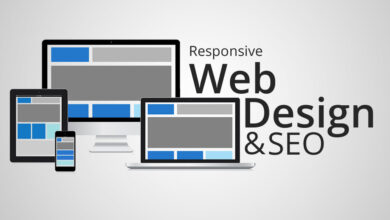The Impact of Visual Storytelling on SEO

In today’s digital landscape, where attention spans are short and competition is high, businesses must develop new ways to engage their customers. Visual storytelling is a powerful method that is becoming increasingly popular. Visual storytelling, by combining attractive graphics, intriguing storylines, and user-focused content, has the potential to engage visitors while also greatly improving SEO performance. This post will look at the growing relevance of visual storytelling in SEO and how organizations can utilize it to boost rankings, user engagement, and conversions.
What is Visual Storytelling?
Visual storytelling is the process of communicating a message or narrative using photos, videos, infographics, and other visual media. It simplifies complex ideas into digestible content, resulting in an emotional connection between the company and the audience. Unlike traditional material, which is mainly reliant on text, visual storytelling employs images, graphs, or videos to create a more immersive and memorable experience. In an age where social media platforms like Instagram, Pinterest, and YouTube have soared in popularity, it’s evident that visual content is more than just a fad—it’s the future of content marketing.
Beyond audience appeal, visual storytelling is essential for search engine optimization (SEO), assisting websites in not just attracting but also retaining users, resulting in improved performance metrics and higher search engine ranks.
How Visual Storytelling Improves User Engagement
User experience is a basic factor in SEO. The more time consumers spend on your website, engaging with your content, and exploring new pages, the more useful your site seems to search engines.Visual storytelling naturally captures interest from consumers, making it easier to view and engage in the content.
Consider the following ways visual storytelling improves engagement:
- Higher Retention Rates: Humans are hardwired to process pictures faster than text. According to studies, people recall 80% of what they see and do, but just 20% of what they read. Visual storytelling helps to transmit complicated information more quickly and effectively, resulting in longer page visits, higher retention rates, and, ultimately, a more engaged audience.
- Lower Bounce Rates: Plain-text websites may drive readers away faster, particularly in today’s fast-paced digital environment. Engaging graphics and tales, on the other hand, keep viewers interested and reduce bounce rates, which is a criterion that Google and other search engines evaluate when ranking websites. Lower bounce rates suggest that your website delivers valuable content that meets user expectations.
- Increased Social Sharing: Infographics, videos, and photos are easily shared on social networking networks. Not only do they generate likes and comments, but they also encourage people to share the content with their networks. Social media signals like shares, likes, and retweets have an indirect impact on SEO since they increase brand visibility, drive traffic, and create important backlinks through social media platforms.
- Deeper Emotional Connection: Visual storytelling explores the emotional side of human nature. Consumers interact more with stuff that elicits an emotional response. Brands may build a stronger connection with their audience by utilizing images or videos to elicit feelings of inspiration, curiosity, or delight, pushing them to take action—whether that action is subscribing to a newsletter, making a purchase, or sharing the content.
Visual Content and SEO Ranking Signals
Although Google’s algorithms are continually evolving, visual storytelling has a direct influence on some ranking metrics. High-quality graphic content can boost a website’s authority, improve the user experience, and eventually lead to higher ranks.
- Rich Media Enhances On-Page SEO:Embedding high-quality photos, videos, and infographics on your website enhances the user experience by breaking up big blocks of text and increasing information accessibility. Visual components such as alt text, image titles, and file names assist search engines in crawling and understanding media, potentially improving on-page SEO. Furthermore, optimizing visual material with appropriate keywords, tags, and descriptions guarantees that both search engines and consumers can quickly find your content.
- Increased Dwell Time: Dwell time is how long a user stays on a website before returning to the search engine results page (SERP). Visual storytelling naturally boosts dwell time since consumers are more inclined to fully engage with visual material, whether it’s a movie or an interactive infographic. Longer dwell periods signal to search engines that your material is engaging and worthwhile, resulting in higher ranks.
- Video Content Drives Traffic: According to study, video content is 50 times more likely to generate organic search traffic than plain text. Video storytelling, in particular, enables organizations to express their experiences in a more personal and accessible manner, which connects with users and contributes to SEO success. Hosting movies on your own website (rather than only on platforms like YouTube) can lead to increased traffic, more time spent on your pages, and, eventually, higher rankings.
- Backlink Potential: Visual information, particularly infographics, has a high chance of getting backlinks. Other websites, bloggers, and influencers frequently link to visually appealing and data-rich infographics when sharing pertinent information with their audiences. These backlinks are critical for increasing domain authority, which is an important component of SEO success.
How to Leverage Visual Storytelling for Better SEO
Implementing a visual storytelling strategy can elevate your SEO efforts by making content more accessible and engaging. Here are key tactics to consider:
- Optimize Visual Content: Ensure that all photos, infographics, and videos are SEO-friendly by include relevant keywords in the file names, alt texts, and captions. Use descriptive file names instead than generic ones, such as “image1.jpg.” Additionally, compress your photos to ensure fast website loading rates, which are crucial for both user experience and SEO rankings.
- Create High-Quality, Shareable Content: Create interesting visuals that your audience will want to share on social media. Content that is emotionally compelling or gives useful information in an easy-to-digest manner is more likely to go viral, resulting in more backlinks, brand awareness, and organic traffic.
- Integrate Visuals into Blog Posts: To make your blog entries more engaging and appealing, include both content and graphics. Incorporating movies, charts, and infographics can help readers digest large bits of material. This also accommodates various learning methods, whether people like to read, watch, or see information given graphically.
- Utilize Infographics: Infographics are a great method to provide data-rich or complex information in a visually appealing fashion. They not only increase interaction, but they are also extremely shareable. Infographics that summarize blog content or show new data are more likely to receive backlinks and social media shares.
- Focus on User Intent: At the heart of both visual storytelling and SEO is the need to meet user intent. Every visual should be designed with the end user in mind. Whether you’re creating a product demo film, an infographic with useful information, or a gallery of customer success stories, make sure your graphics serve a clear purpose that meets your audience’s demands.
The Future of SEO and Visual Storytelling
As search engines get more sophisticated, they are expanding beyond keyword-specific algorithms. Google, for example, focuses on user experience, interaction, and mobile-first design.. Visual storytelling is ideally aligned with these changes in SEO.
Google’s growing emphasis on Core Web Vitals – metrics that evaluate user interaction and experience on your website, such as page loading speed, interactivity, and visual stability — implies that effective visual storytelling can dramatically improve your site’s overall performance. The rise of technologies such as augmented reality (AR) and virtual reality (VR) is stretching the frontiers of visual storytelling, enabling for immersive and interactive experiences that will undoubtedly become more influential for SEO in the coming years.
As more organizations turn to video content, immersive storytelling, and interactive media, we should expect visual material to play a larger role in SEO efforts. Businesses that adopt these trends now will be well-positioned to outperform the competition.
Conclusion
The power of visual storytelling in SEO is indisputable. In a world where people want quick, interesting, and relevant content, combining stunning images with successful tales can significantly improve your SEO approach. By enhancing user engagement, dwell time, and creating shareable content, visual storytelling helps businesses improve their search rankings and drive organic traffic.
If you haven’t already incorporated visual storytelling into your SEO approach, now is the time to start. Focus on creating high-quality, visually appealing content that connects with your target audience, and your SEO performance will skyrocket.





